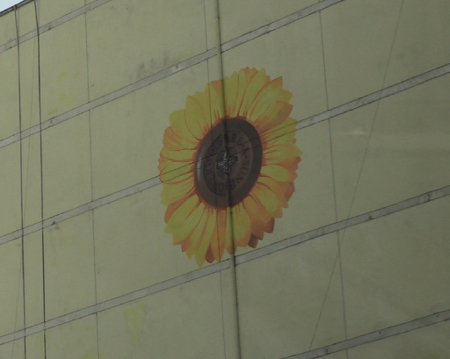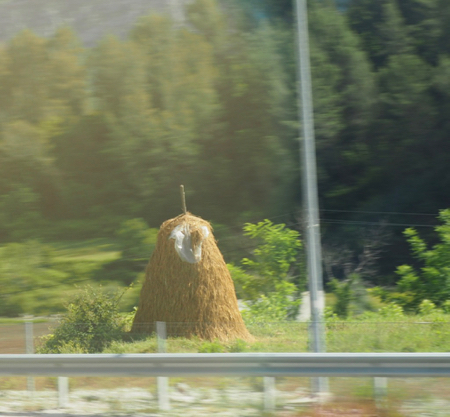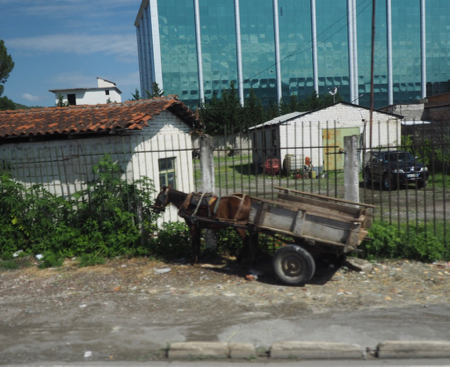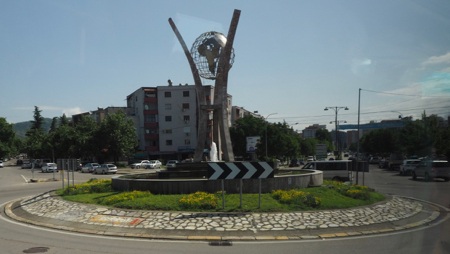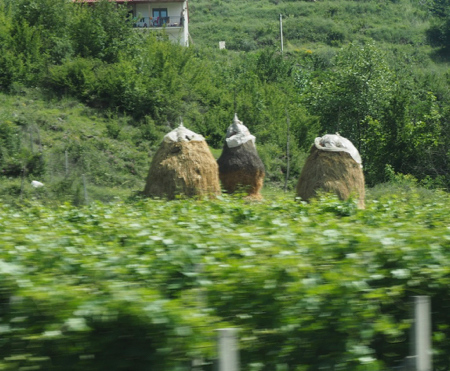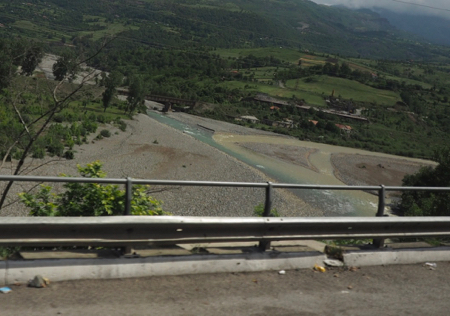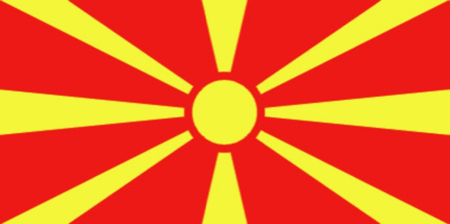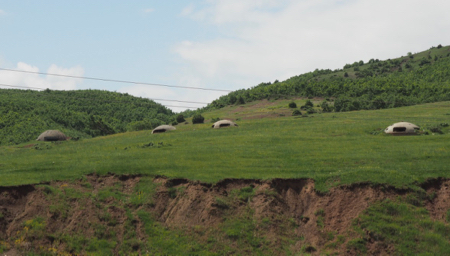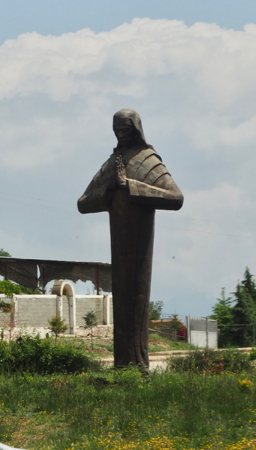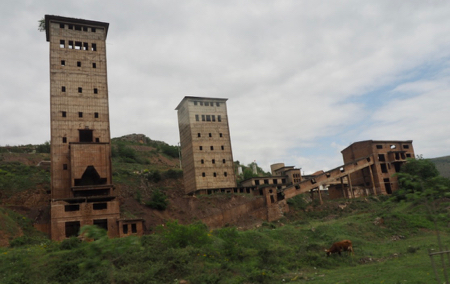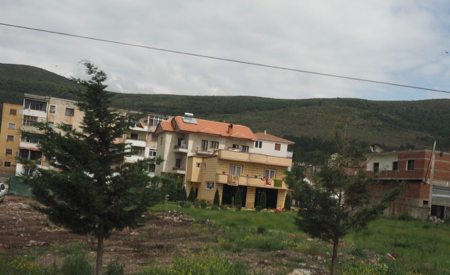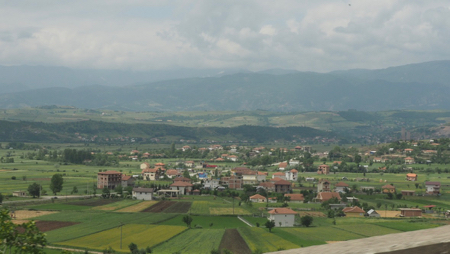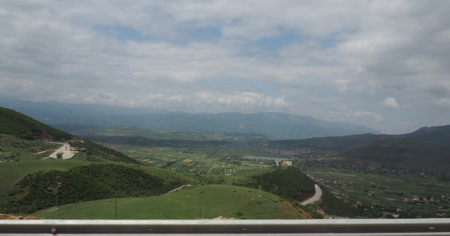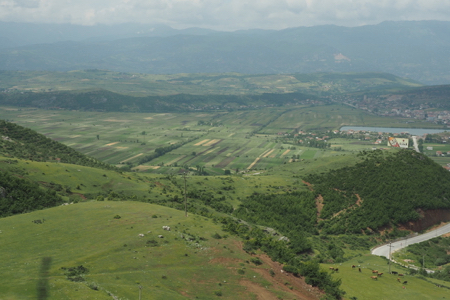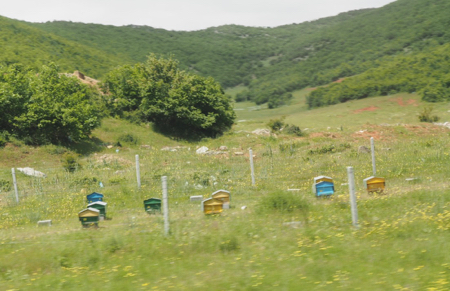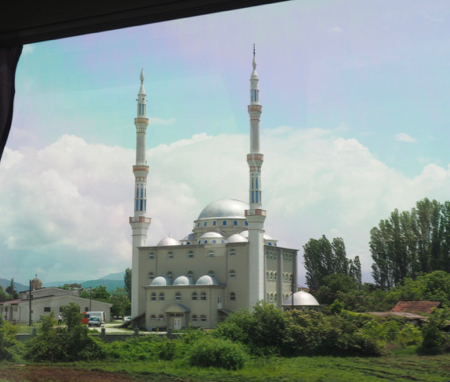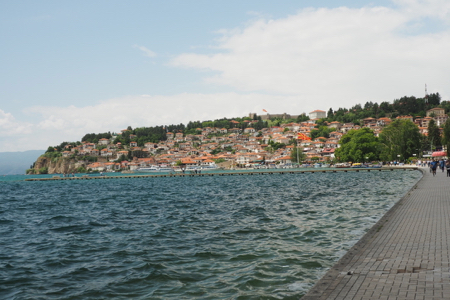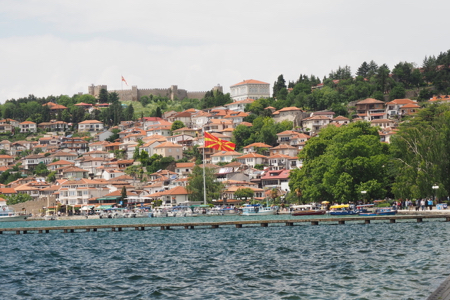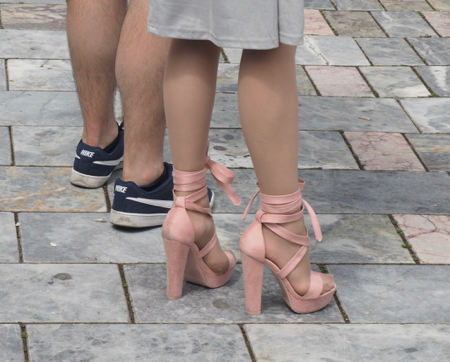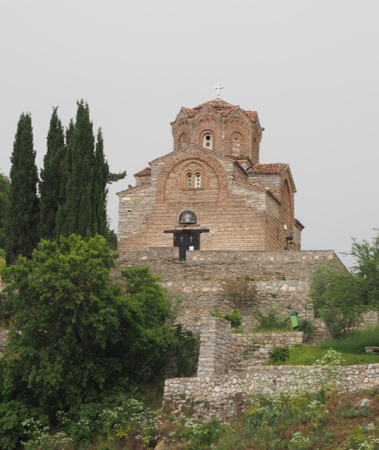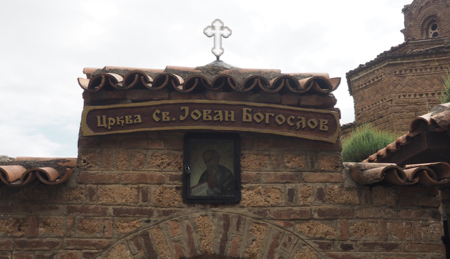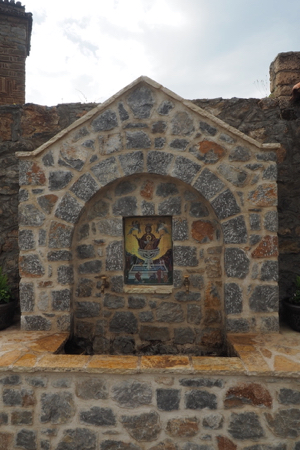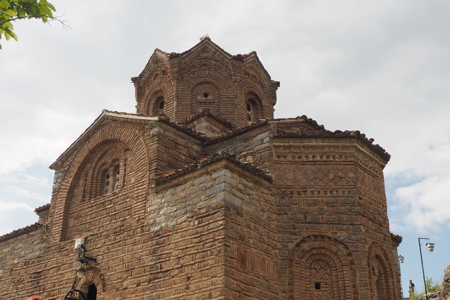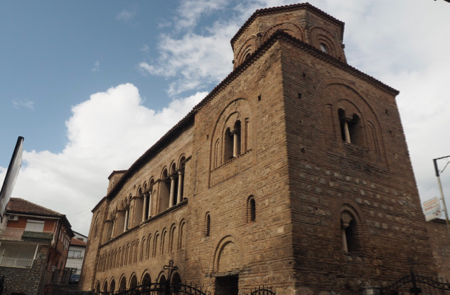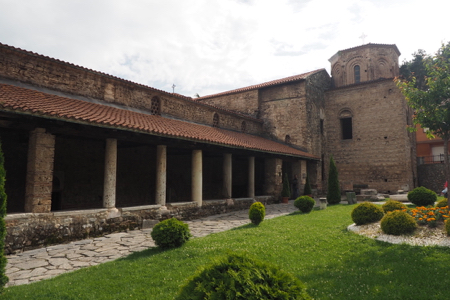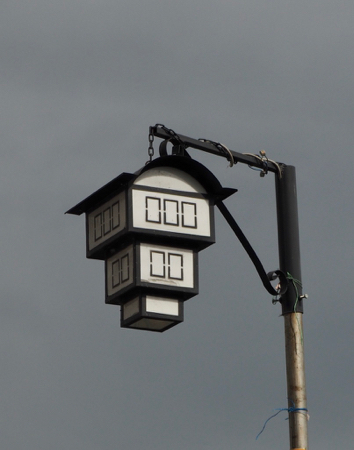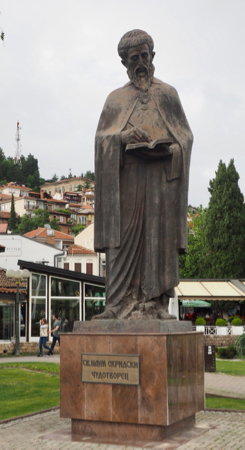Thurs., 5/24/18 - Tirana, Albania to Ohrid, Macedonia
Today we left Tirana and headed for our next country, Macedonia. We traveled east today, sometimes on dual lane super highways, and then had to take back roads while they build tunnels and the next section of road. Today we saw many more small strips of farms and cute haystacks ready to feed cattle. This area supposedly grows a lot of Turkish tobacco but I did not see any today.
On the whole, we really liked Albania - the villages, the food, and the nice people we met. We wish them well and hope they reap the benefits they are seeking when they are accepted into the EU.
Wall in Tirana
Haystack
Local transport
Traffic circle
Shitet means For Sale in Albanian
Car washes abound
More haystacks - hay is stacked around a vertical pole and a "cap" put on the top of the pole
Confluence of the Bojana and Drini rivers
It is almost noon and we are sitting at the border between Albania and Macedonia. Before the EU Schengen agreement, this waiting and long lines of trucks would have been the scene between all the European countries. At the border with the Republic of Macedonia, there were WWII gun bunkers on both sides of the mountain pass. In between the bunkers is a modernistic statue of Mother Teresa symbolizing peace, not war.
We crossed into Macedonia without having our bus searched and our Macedonian guide, Praia, joined us. Sixty percent of the population is Macedonian and 25% is Albanian Moslems. The Albanian Moslems live in the western edge of the country so we saw many mosques as we drove toward Ohrid. These Moslems are rich and the houses are large and well built but many of them are empty because the occupants live abroad in Switzerland, France, or Germany
Flag of Macedonia
Macedonian License Plates - the top example is what I call the EU hopeful style
WWII gun bunkers
Huge statue of Mother Teresa
Unfinished buildings
Houses
Rich valleys
Rich valleys
Rich valleys
Bee boxes
Mosque
Macedonia is land locked and needs to be friendly with its border neighbors. Greece, to the south, is not happy with them because both countries want to claim Alexander the Great and the Macedonian Empire as its cultural base. Greece’s northern region is called Macedonia and Greece wants the Republic of Macedonia to change its name. In July, 2018, the Republic of Macedonia changed its name to the Republic of Northern Macedonia. Many of the northern Greeks don't like that either so we will just have to wait and see how it all turns out.
The population of Macedonia has several different nationalities and religions living together but they have different schools or classes for each one. They are not well assimilated. It is bound to create problems.
Ohrid is on the northeast edge of the huge Lake Ohrid, which is claiming to be the “oldest lake in Europe.” The city is referred to as the Balkan Jerusalem because at one time (in the 11th c.) it had 365 churches.
Lake Ohrid
Town of Ohrid
These must really be fun on cobblestones!
We took water taxis across the lake to the 13th c. Byzantine church (built in the “Armenian style”) of St. John Theologian-Kaneo and walked back to town along the shore.
In town we looked at St. Sophia Cathedral. The first European university was supposedly built in Ohrid in the 9th c. Of course this is debatable.
Byzantine church of St. John Theologian-Kaneo
Byzantine church of St. John Theologian-Kaneo
Byzantine church of St. John Theologian-Kaneo
Byzantine church of St. John Theologian-Kaneo
St. Sophia Cathedral
St. Sophia Cathedral
Is it a light post or a bird house?
St. Cyril
We had an included lunch in town in a restaurant filled with antiques like Singer treadle sewing machines. Since we did not need to go out for dinner we had a cocktail party on our balcony (our room was too small). Anne, Toppy, and Alexandra joined us for wine cheese, and crackers.
| Return to Top | Return to Itinerary | Return to Trips page to view other trips | Return to Dreamcatcher Home Page |
